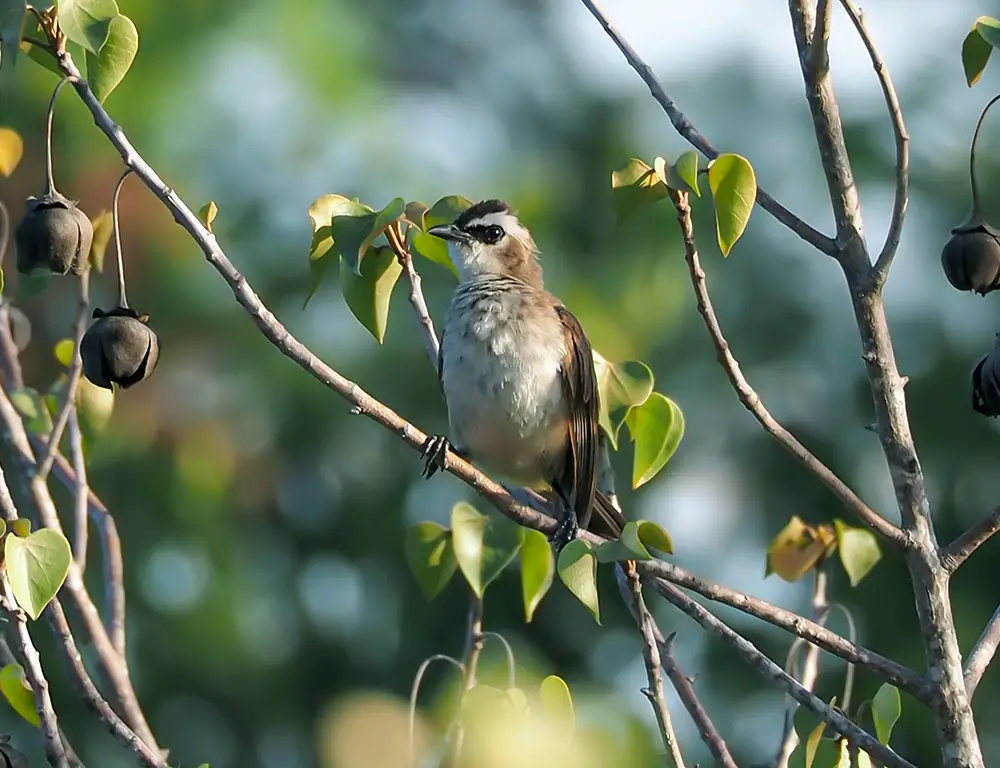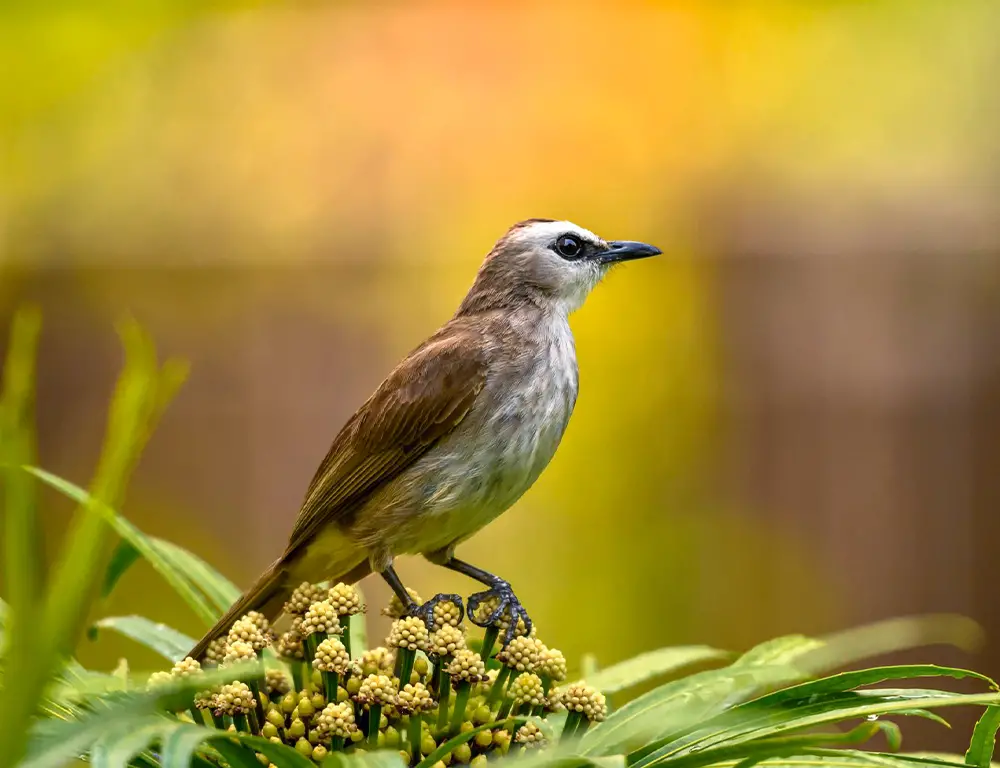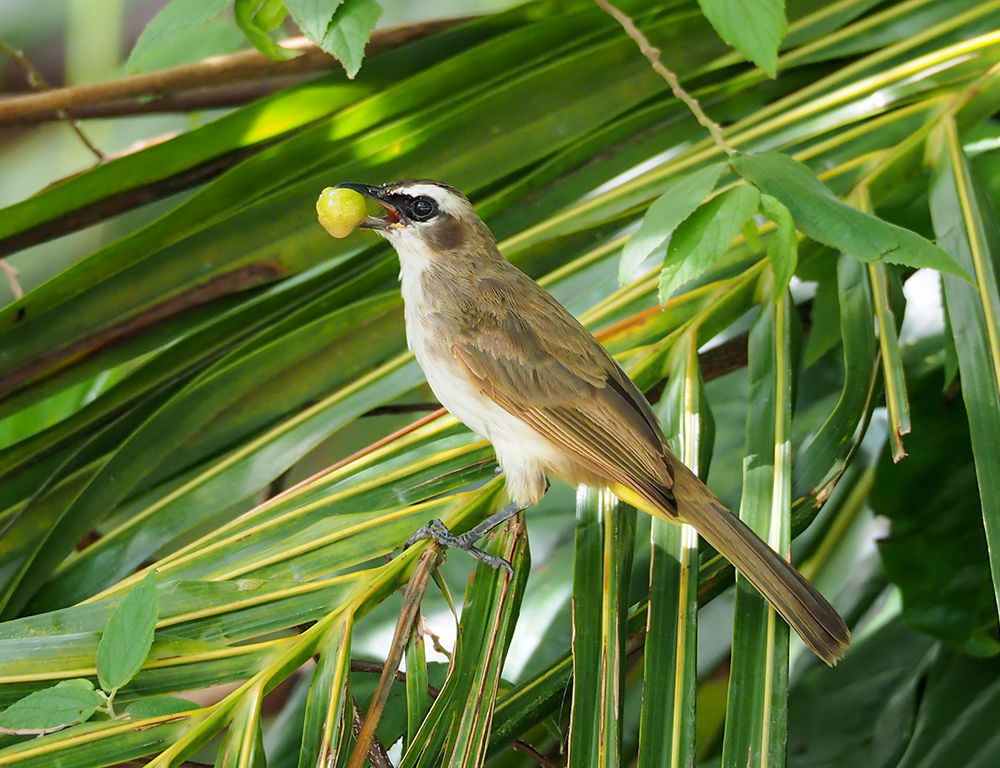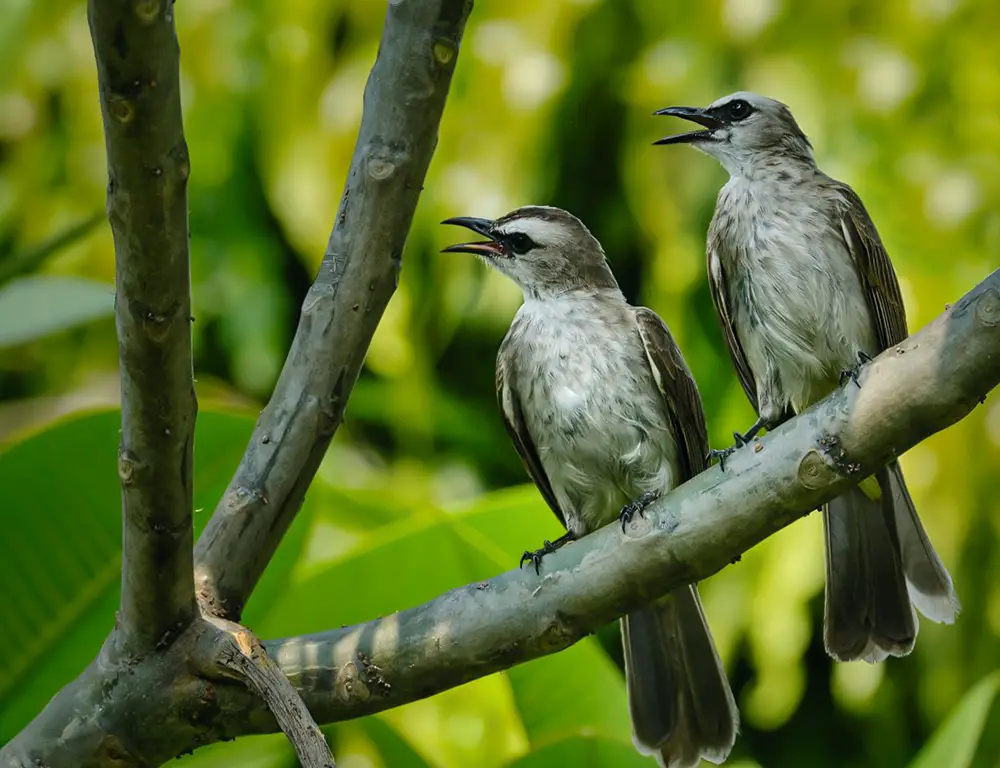Diving into the realm of ornithology unveils a captivating world, with the Yellow-Vented Bulbul standing out as a mesmerizing subject.
Native to Southeast Asia, this bird’s allure extends beyond its striking appearance. Its brownish upper body contrasts with a whitish underpart and vibrant yellow accents around its vent area.
Its melodious calls echoing through open habitats like gardens and parks offer a serene connection to nature amid bustling urban landscapes.
What truly sets this species apart is its remarkable adaptability, thriving in its natural habitats and near human settlements.
The Yellow-Vented Bulbul’s ability to easily navigate diverse environments and its innate survival instincts make it a captivating subject for ornithologists and nature enthusiasts, inviting further exploration into its intriguing behaviors and ecological significance.
Habitat and Distribution of the Yellow-Vented Bulbul

The Yellow-Vented Bulbul’s habitat and distribution showcase its remarkable adaptability and widespread presence across Southeast Asia. Here’s a summary:
Habitat
Yellow-Vented Bulbuls are highly adaptable birds, making homes in diverse environments. They are commonly found in open country with trees and bushes and readily inhabit urban areas such as gardens, parks, and orchards.
Their flexibility allows them to thrive in both rural and urban landscapes.
Geographical Distribution
The Yellow-Vented Bulbul is widespread across Southeast Asia, with significant populations in various countries:
- Myanmar: They are widespread throughout the country.
- Thailand: They are common in Thailand.
- Cambodia: Yellow-vented Bulbuls are abundant in Cambodia.
- Vietnam: They are frequent inhabitants of Vietnam.
- Malaysia: The species is widespread across Malaysia.
- Singapore: Yellow-vented Bulbuls are abundant in Singapore.
Their presence extends from Myanmar and Thailand in the north to countries like Cambodia, Vietnam, Malaysia, and Singapore further south. This broad distribution highlights their adaptability to different environments and ability to thrive across varied landscapes.
Altitudinal Range
Another remarkable aspect of their habitat adaptation is their ability to inhabit a wide range of altitudes. They are found in lowland forests and mountainous regions, reaching elevations of up to 1000 meters above sea level.
This ability to live at varying altitudes further enhances their adaptability and resilience.
Physical Characteristics of the Yellow-Vented Bulbul

The Yellow-Vented Bulbul has a fascinating array of physical characteristics distinguishing it from other bird species. Let’s summarize these features:
Yellow Vent
The most distinctive feature is the bright yellow plumage beneath their tails, strikingly contrasting their brownish-grey body and black head.
Size and Weight
Despite being small, they are robust birds, measuring approximately 20 centimeters (7.9 inches) in length and weighing around 30 grams (1.06 ounces), making them lightweight yet sturdy.
Wingspan
Their wingspan extends to approximately 28 centimeters (about 11 inches), aiding them significantly during flight and maneuvering through their habitat.
Eye-Ring and Beak
They possess a white eye ring that stands out against their dark heads and a sharp black beak, contributing to their distinctive appearance.
Legs
Their legs are small and covered in greyish-blue scales, providing them with the agility required for perching and moving around efficiently.
Adaptations for Survival
Their sturdy beaks are well-suited for feeding on various food sources, including berries, insects, and small fruits, showcasing their adaptability and resourcefulness in obtaining nutrition.
Diet and Feeding Habits of the Yellow-Vented Bulbul

The Yellow-Vented Bulbul’s dietary choices and feeding habits showcase its adaptability and opportunism.
Let’s delve into the fascinating world of their diet:
Omnivorous Diet
Yellow-vented bulbuls are true omnivores, meaning they consume diverse food sources. Their diet includes:
- Insects: They feed on various insects, such as caterpillars and beetles, which provide them with essential proteins and nutrients, particularly during breeding seasons when protein-rich food is crucial for chick growth.
- Fruits: Fruits like papaya, figs, and berries are among their favorite food items. They actively forage for ripe fruits in trees or shrubs, utilizing their agility to hop around and locate food.
- Nectar: Yellow-vented Bulbuls also consume nectar from flowering plants, exhibiting their ability to utilize floral resources for sustenance. They are often observed hovering in mid-air while sipping nectar from flowers.
Adaptive Feeding Habits
These bulbuls exhibit adaptive feeding habits, adjusting their dietary preferences based on seasonal variations and food availability. They prioritize insect-rich foods during breeding seasons when protein is essential for chick growth.
In contrast, they may rely more on plant-based foods during other times of the year.
Opportunistic Feeders
Yellow-vented Bulbuls take advantage of human-induced environmental changes, frequently visiting backyard gardens and orchards for easy meals.
This opportunistic behavior allows them to capitalize on readily available food sources, contributing to their adaptability and survival in urban landscapes.
Role in Adaptability
Their flexible diet significantly influences their adaptability, enabling them to thrive across various habitats, from lush forests to urban environments.
Switching between different food sources ensures survival even when faced with changes or scarcity in their food supply.
Conservation Status of the Yellow-Vented Bulbul

The Yellow-Vented Bulbul, currently listed as “Least Concern” by the International Union for Conservation of Nature (IUCN), still faces potential threats that could impact its population.
Here’s a deeper look into its conservation status:
Current Status
Currently, the Yellow-Vented Bulbul is not considered threatened or endangered, thanks partly to its adaptability and resilience to human disturbances.
Potential Threats
Despite its current status, several factors pose potential risks to the species:
- Land Development: Urban expansion and agricultural activities result in habitat loss as forests are cleared away, diminishing the bird’s natural habitats.
- Pollution: Chemical pollutants and waste from human activities can contaminate food sources, impacting the bird’s health and reproductive success.
- Climate Change: Temperature patterns can disrupt breeding cycles and alter food availability, affecting the bird’s survival and population dynamics.
Adaptability
The Yellow-Vented Bulbul’s ability to thrive in urban areas and adapt to human disturbances has contributed to its resilience. However, this adaptability should not lead to complacency regarding conservation efforts.
Need for Vigilance
While the species may be coping well, continued monitoring and conservation efforts are crucial. Vigilance is necessary to address potential future threats and ensure the long-term survival of the Yellow-Vented Bulbul.
FAQs
How does the Yellow-Vented Bulbul communicate?
The Yellow-Vented Bulbul communicates through various vocalizations, including melodious calls, chirps, and trills, which serve purposes such as territory defense, mate attraction, and social interactions.
What are the nesting habits of the Yellow-Vented Bulbul?
The Yellow-Vented Bulbul constructs cup-shaped nests of twigs, grass, and other plant materials, usually in trees or shrubs. Both male and female birds participate in nest building and care for the young.
How do Yellow-vented Bulbuls contribute to seed dispersal?
Yellow-vented bulbuls play a role in seed dispersal by consuming fruits and berries and then excreting the seeds in different locations as they move through their habitat. This process helps in the regeneration and dispersal of plant species.
What are the predators of the Yellow-Vented Bulbul?
Common predators of the Yellow-Vented Bulbul include birds of prey such as hawks and owls, snakes, cats, and other small mammals that may prey on eggs, nestlings, or adult birds.
How do Yellow-vented Bulbuls contribute to ecosystem balance?
Yellow-vented bulbuls help control insect populations by feeding on insects and larvae, thus playing a role in pest management. Additionally, they contribute to plant pollination and seed dispersal, promoting plant diversity and ecosystem health.
Conclusion
The Yellow-Vented Bulbul is a remarkable example of nature’s resilience and adaptability. Thriving across diverse habitats, from lush forests to urban gardens, its robust nature is evident.
With a varied diet, including fruits, insects, and nectar, it has secured its place in ecosystems. Successful breeding, often in protected environments, ensures the continuation of its lineage. This bird exemplifies the intricate balance of biodiversity.
As observers, our role in preserving such remarkable species is paramount. Through understanding and conservation efforts, we uphold the invaluable contribution of every creature to our ecosystem.
The Yellow-Vented Bulbul serves as a reminder of the intricate web of life, urging us to cherish and protect the diversity that enriches our world.